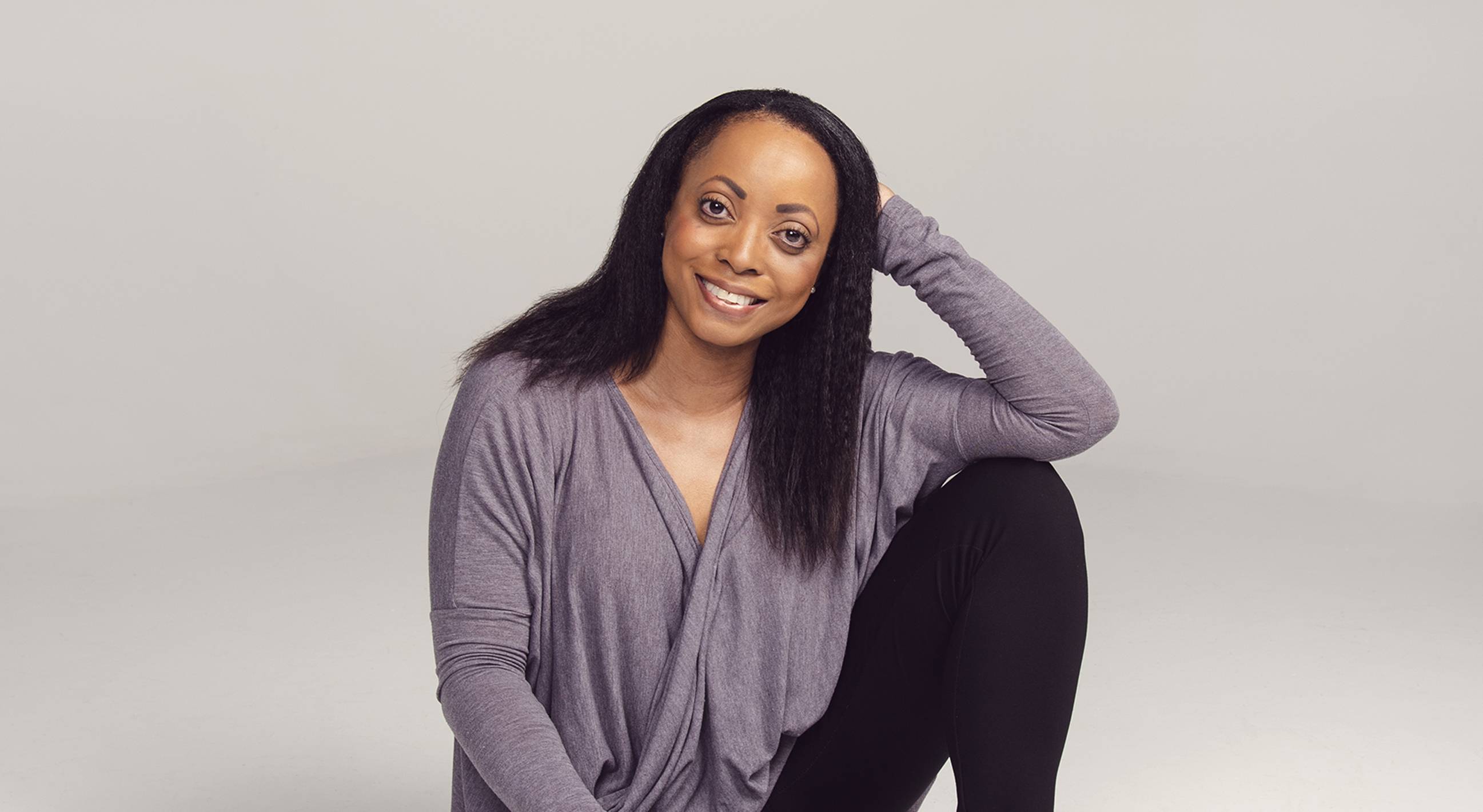
Dr. Stacy D. Hunter explores the benefits of yoga
Dr. Stacy D. Hunter is an assistant professor in the College of Education, teaching courses on cardiovascular physiology in the Department of Health and Human Performance. As a researcher, she studies the benefits of yoga on lowering blood pressure in adults with elevated blood pressure or stage 1 hypertension.
She received her doctorate in clinical exercise physiology at The University of Texas at Austin. “I didn’t get a Ph.D. to go into academia. I never thought I wanted to become a professor; that was never my aim,” she says. Hunter worked as a clinical research manager before joining Texas State’s faculty. “My favorite part of the job is teaching. I think I love that even more than the research.”
Q: How did you become interested in yoga?
“I started the first study before I had even taken a yoga class — ever. I figured I should start practicing this if I am going to be studying it. I’ve been practicing yoga since 2008.
“I moved to Texas 11 years ago for my Ph.D. I came in pretty ambitious, wanting to finish the degree in three years. I told my mentor I really wanted to move on with my life and get started with my career, having already taken four years off during my undergraduate studies.
“You need a dissertation topic and we needed to do a series of three studies back-to-back. They had just finished this study that compared resistance training vs. combined resistance and endurance training on vascular functions. They chose stretching for their control group — three times a week, 45 minutes a day.
“My mentor became interested in flexibility and he thought that most people don’t stretch for 45 minutes each day. So, he thought, ‘What can we do to mimic that?’ Yoga was the answer.
“He was not a yoga practitioner — nor was I. I had never done it before.”
Q: What are we learning now about the health benefits of yoga?
“Usually when I speak to a yoga scholar, someone who learned the practice in India, they basically say, ‘We always knew it was good for us. We always knew it had health benefits.’
“I do know that in the last 10 years or so there has been a huge increase in the number of studies that have been done on the practice of yoga. My first studies in 2008 — trying to publish in the area of yoga and vascular health and potentially reducing the risk of cardiovascular disease — those manuscripts were met with a great deal of resistance.
“Now 11 years later, there is definitely more widespread acceptance of it — among scientists and physicians alike. Now they’re starting to initiate it into some cardiac rehab programs. This speaks volumes — that the American Heart Association is even posting things about yoga onto their website.”
Q: What would you like people to know about your research?
“Most of the studies I’ve done have been with relatively healthy individuals. What we have shown to date — there have been beneficial physiological adaptations both in healthy people and now in people with hypertension. We’ve seen improvements in flexibility. We’ve also seen reductions in insulin concentrations and glucose tolerance, and some weight loss in obese individuals. We’ve seen improvements in quality of life reported via survey. We’ve documented improvements in vascular health, some reductions in arterial stiffness with practicing three times a week, and with people who are overweight or obese. We’ve also seen improvements in arterial stiffness even in young, healthy adults.
“Most of the studies have been done in hot yoga — I studied Bikram — which is 105 degrees. Last year we published a study comparing the 105-degree to standard room temperatures and the same postures. We saw the same improvements in vascular health in middle-aged adults. I think that study helped to alleviate some concerns about people practicing in the 105-degree room given that similar benefits can be obtained outside the saunalike environment.”
Q: What do you bring to the classroom?
“What I studied directly applies to what I teach cardiovascular physiology. We talk about the blood vessels; the blood vessel function. We talk about how blood vessels regulate blood pressure and how they play a role in preventing or delaying the progression of atherosclerosis (plaque buildup inside the arteries).
“When we talk about coronary heart disease, cardiovascular disease, we are talking about plaque buildup in the vessels. Inflammation contributes to the growth of the plaque and the partial occlusion of the vessel that leads to the heart attack eventually in some people.
“I talk about cardiovascular disease as a part of my cardiopulmonary exercise physiology classes.
“The undergraduate class focuses on the pathophysiology of different diseases. We talk a lot about hypertension, peripheral artery disease, heart failure — all of these things under the umbrella of cardiovascular disease. Endothelial dysfunction, or a reduction in nitric oxide production, which is reflected by the vascular health measures we regularly obtain in the Cardiovascular Physiology Laboratory, contributes to all of those conditions.”
Q: Does anyone else in your family practice yoga?
“My mom is over 70, and she is in great shape. She has been doing yoga for about a year, five days a week. She likes the way it makes her feel.”